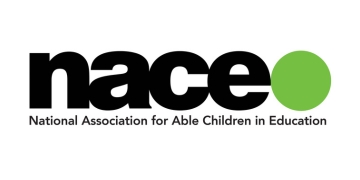Ofsted’s chief inspector Amanda Spielman sparked controversy yesterday over several claims in a blog post outlining the impact of school funding pressures.
The post was hastily removed by the watchdog, which said it was published “erroneously”. It will be released in the coming weeks to coincide with the publication of a more detailed study on the issue.
However, the blog’s contents have been reported widely across national media, with varied takes from schools cutting curriculum because of funding pressures to Ofsted fears schools will ‘squander’ extra cash.
So, in the interests of transparency, Schools Week has published the blog in full so readers can make up their own minds.
Commentary on school funding
 In September 2018, the Public Accounts Committee asked me to comment on the major risks to the quality of education and school effectiveness, including the impact of funding. In October 2018, I responded to the Committee with a letter, which included a literature review of the available research into the impact of funding on the quality of education.
In September 2018, the Public Accounts Committee asked me to comment on the major risks to the quality of education and school effectiveness, including the impact of funding. In October 2018, I responded to the Committee with a letter, which included a literature review of the available research into the impact of funding on the quality of education.
I noted the lack of research and evidence on the impact of funding and committed Ofsted to carrying out a study of the ways in which schools are dealing with funding pressures. Our latest research report, published today, outlines the findings of this study.
Background: School funding is not historically low, but has decreased in recent years, and costs have risen
First, it is important that we are clear on what the actual funding situation is. Although per-pupil school spending has reduced by 8 per cent in real terms between 2010 and 2019, it is still 14 per cent higher in real terms than it was in 2003–04.
It is also the case that spending on schools in the UK remains above average for the Organisation for Economic Co-operation and Development (OECD) member countries.
That is not to say that there are not schools that are facing significant financial pressure. Since 2015, costs have been rising more rapidly than income. Most of the reduction in spending comes from cuts to local authority (LA) budgets, which have had a significant impact on schools.
One strong driver of this has been cuts to local provision for pupils with special educational needs and disabilities (SEND). In 2017–18, more than 4 out of 5 LAs overspent their high-needs budget. This includes the money that central government gives them to fund mainstream schools to provide for pupils with particularly high needs.
We do not make a judgement on whether the cause of this is too little funding, overly costly provision, or a combination of both. But a driver is certainly the 35 per cent increase in the number of pupils with an education, health and care plan (EHCP) since 2014. This is due to a growing pupil population, raised parental expectations and changes to legislation.
Of course, when looking at school finances, funding pressures are not the only important issue. How schools make financial decisions, how they spend the funding they have, and how efficient and effective these decisions are, have to concern us all as taxpayers.
This includes both schools under financial pressure and those that are accumulating a large surplus. Indeed, schools running a surplus outnumber those with a deficit.
When those decisions impact on the overall quality of the education a school provides, that is clearly something Ofsted needs sight of too. This matters whether or not school funding is sufficient.
At Ofsted, we of course do not oversee school finances, but they could be significant indicators of school management. In our research, we therefore looked at not only what funding pressures schools were facing, but also at how they were responding to them. There are lessons on both.
Schools feel squeezed and see funding as a major issue
In responses to our survey and interviews on school visits, school leaders told us that they felt under significant financial pressure. They saw this as resulting not just from funding cuts, but also from rising costs, and from instability and uncertainty around both costs and income.
It is clear that many are having to make tough decisions and difficult choices. Schools were responding to these pressures by reducing staffing, cutting back on non-essential building maintenance, and limiting additional provision for pupils, not least those with SEND.
In many cases, we found that schools were making these decisions in an informed way, using benchmarking and other evidence.
However, too often we found that decision-makers were not sufficiently monitoring the impact of their decisions on the quality of education and on their most vulnerable pupils. Three main areas appear to be affected:
- SEND provision
- curriculum breadth and education quality
- teacher workload
SEND provision is being squeezed
Schools told us that they had reduced provision for SEND, and for pupils who receive SEND support (SEND-S) in particular.
This ranged from reducing one-to-one support, to cutting their use of external services, such as educational psychology, behavioural support and alternative provision.
Individual support from teaching assistants had reduced particularly starkly, though not all the people we spoke to felt this meant quality of support had suffered.
However, what the reduction in school support for pupils with SEND-S will potentially do is reinforce the view among many parents that obtaining an EHCP is the ‘golden ticket’ required for effective SEND-S. This could in turn drive further demand for EHCPs, increasing pressure on the SEND system.
As a result of the funding squeeze on LAs, schools have in some cases been asked to provide support and services they are not necessarily well equipped to provide.
It is not reasonable to expect schools to be the main port of call for often highly specialised needs. Local SEND provision cannot be the responsibility of schools alone.
We have also found in our LA SEND inspections that there are major challenges to SEND provision in England. These include over- and under-identification of SEND and a lack of join-up between local agencies, with fragmented provision sometimes leading to inconsistencies within an area.
Funding pressure, though not the sole cause, is likely to be an exacerbating factor. The ongoing SEND review, led by the Department for Education (DfE), is therefore to be welcomed. It should be bold enough to look at the whole structure of SEND provision, including its legal basis.
Schools therefore had difficult decisions to make. In many cases, we found they did so thoughtfully and in the best interests of children. But this was not always the case.
In one school, for example, a special educational needs and disabilities coordinator (SENDCo) was given a 100 per cent teaching load. In another, teachers were asked to deal with SEND-S by differentiating instruction using a 5-side registration sheet recording the needs of every pupil in the class.
Curriculum breadth and quality of education may be coming under pressure
We placed curriculum and quality of education at the heart of our education inspection framework, because all pupils should be entitled to a broad and rich curriculum that will give them the foundations for further study or work, and prepare them for life in modern Britain.
This makes it particularly concerning that schools are responding to funding pressure by reducing curriculum breadth, with languages, computing, design and technology and music most affected.
Extra-curricular provision has also been cut in a number of schools. This may reduce pupils’ opportunities to enrich their experiences and grow cultural capital.
How staffing cuts are affecting schools
Staffing is the biggest cost in schools, so staff cuts are inevitably a major way in which schools cut costs. In our study, we saw most schools making reductions to the number of teachers.
In some of the secondary schools we visited, subject specialists were not being replaced when they left and other teachers were teaching outside their specialism.
In some schools, experienced teachers were replaced with less-experienced and lower-qualified staff. Schools also reported cutting back continuous professional development and removing teaching and learning responsibility points. In some schools, higher level teaching assistants were being used to cover classes when teachers were absent, rather than the school paying for teachers to cover these lessons.
While individually some of these decisions perhaps cannot be helped, taken together they may lead to a reduction in expertise in the school, with less-experienced teachers and more out-of-subject teaching. This becomes even more of an issue when teachers are not then supported through high-quality professional development.
Although staff cuts may be necessary, this is sometimes being done with insufficient monitoring of the effects on quality of education. This is clearly not the way to ensure that children and young people get the education they deserve.
The average age of the teaching profession in England is already the lowest in the OECD according to the 2018 Teaching and Learning International Study (TALIS). Funding should be used to retain experienced staff with expert subject knowledge in schools.
Rising workload may lead to retention problems
We were also told that funding pressures are affecting teacher workload. Teacher-student ratios have been increasing. Teachers are receiving less hands-on support from senior leaders, who are having to increase their own teaching time.
Senior leaders told us they are taking on additional work due to staff number reductions. They are also doing more outside the school to bring in income, such as working across more than one school, consultancy work or working as Ofsted inspectors.
As we found in our teacher well-being study last year, this is likely to increase teacher stress and harm retention. Schools reported that this was already happening, with a greater rate of teacher absence in turn leading to more instability for pupils.
Attainment is being maintained, however
Our research is clearly showing the strains that schools are under due to tightening funding and rising costs. Nevertheless, there is no hard evidence that this is happening at the expense of academic outcomes. Attainment has remained broadly stable, as have Ofsted inspection grades.
This seeming contradiction can be explained in 2 ways. As schools told us, they are working hard to maintain standards, though the long-term sustainability of doing so is questionable.
We cannot keep pushing teachers to the limit and beyond. But we also saw a lot of schools taking sensible decisions about where and how to cut, often drawing on evidence (such as the toolkit, research summaries and guidance from the Education Endowment Foundation).
Many used benchmarking tools and ‘curriculum-led financial planning’ approaches. Doing this mitigated impact on quality of education or attainment.
A significant minority in our sample were not drawing on these sources, however. In its evaluation of the school resource manager adviser pilot, the Education and Skills Funding Agency (ESFA) has therefore recommended that all multi-academy trusts (MATs) use integrated financial planning processes.
Although we found evidence of good financial decision-making, this was not always the case
Headteachers feel confident in their ability to make good decisions. However, this does not mean that we found universally strong financial decision-making in schools.
In some cases, there was insufficient monitoring of the quality of education and support for the most vulnerable pupils, as we saw in the examples given above.
This means that some schools are making the situation for pupils with SEND and their parents and carers harder and contributing to the fragmentation of local provision.
Many schools we visited were narrowing their curriculum, to the detriment of the education of all pupils, especially those from the most disadvantaged backgrounds.
We also found that few school leaders carefully monitor the impacts of their responses to financial pressure. Governors and trustees have important responsibilities in overseeing financial performance and making sure that money is well spent.
But in some of the schools we visited, their oversight was not as strong as it could be.
In its evaluation of the school resource management adviser pilot, the ESFA highlighted a number of areas where efficiency could increase, such as staff deployment, premises and back-office functions.
Too many MATs are not functioning this way and are not taking full advantage of the opportunities being part of a trust gives them for joint procurement and centralisation of back-office functions.
Budgeting and forecasting are sometimes inaccurate and contracts are not always best value. Although we found a lot of effective decision-making, there are clearly areas for improvement.
Poor decision-making in response to financial pressure is potentially harmful to quality of education. But this could be as big an issue when funding is increased. Funding can still be squandered when it is plentiful, meaning taxpayers’ money could be wasted for little benefit.
Next steps
In light of the potential impact on quality of education and workload of funding pressures, we welcome the fact that, last year, the government committed to increase funding for schools by £7.1 billion by 2022–23.
However, as we mentioned above, direct funding for schools is only one part of the ecology of area funding for children and young people. Shortfalls to funding for SEND and children’s social care will affect schools as well.
Whatever the actual funding situation, the point on the importance of effective financial decision-making still stands. At Ofsted, we do not oversee school finances. That is the role of the ESFA.

But we are inevitably concerned about the decisions that schools make. Schools are working in a challenging financial environment, and we found many examples of leaders being thoughtful and sometimes innovative in how they dealt with that.
But, in the education system as a whole, there is room for improvement in how school leaders and governors make decisions on resources. This will affect the quality of education that our children and young people will receive, and that makes it a priority to us at Ofsted.
For this reason, we will be carrying out research to see whether it is helpful for inspectors to go into schools with some financial indicators, and what conversations with leaders, governors and trustees may help inform our judgements on leadership and management and quality of education. We will then decide whether to include these elements in future school inspections.
We are of course working closely with the ESFA and the DfE on this, to ensure that whatever we do is complementary and does not add an unnecessary layer on top of existing financial accountability measures. We will be reporting on this work in autumn 2020.
Endnote: how we carried out our research
The findings we are reporting on here and in our main report are based on:
- survey responses from 201 headteachers
- telephone interviews with 18 headteachers (4 who had identified high impact from funding cuts, 4 who had identified little impact and 10 who reported that their school had made major changes to SEND provision in response to financial pressure)
- HMI focus groups and reflections
- research visits to 16 schools
In the research visits to schools, we interviewed senior leaders, school business managers, teachers, SENDCOs, support staff, governors and trustees. The sample included 8 primary and 8 secondary schools and was chosen to be broadly representative of schools in England.










And here is the rub:
“Nevertheless, there is no hard evidence that this is happening at the expense of academic outcomes.”
A world-class education on a budget.
I’d be keen to know what Ofsted ratings these 16 schools had. I can guarantee you this, Ofsted will have not made the connection between funding, pupil demographics and overall school outcomes. A tougher nut for us all to crack is what influence parents have, until then, it’s a good starting point with all of the above, yet Ofsted has still failed to evaluate what impact their judgements have on much of what is evaluated. No government minister would want a watchdog to say its own evaluation comments are making matters worse for teacher wellbeing, retention, recruitment and that this is increasing (wasted) costs associated for schools managing all of these…